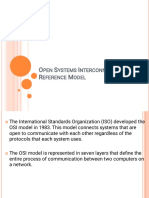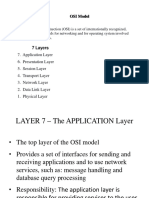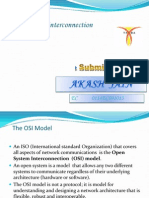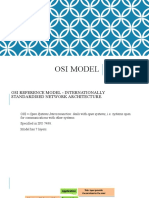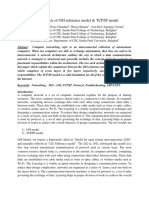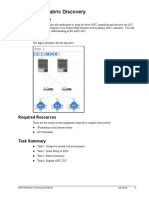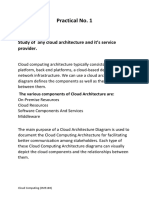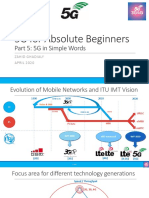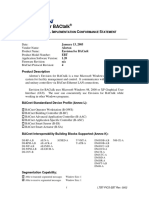0% found this document useful (0 votes)
46 views38 pagesLecture Notes 5 Networks Comp Sci
The document provides information about the OSI reference model and TCP/IP model. It explains:
1. The OSI reference model is a 7-layer model that defines protocols for network communication. Each layer has a specific function like physical transmission, data framing, routing, and application interfaces.
2. The TCP/IP model also has 4 layers and is based on two main protocols: TCP for reliable connections, and IP for routing packets through networks.
3. The models describe different approaches to network communication, with OSI focusing on interconnectivity and TCP/IP enabling packet switching in early Internet development.
Uploaded by
De Shad BosticCopyright
© © All Rights Reserved
We take content rights seriously. If you suspect this is your content, claim it here.
Available Formats
Download as PDF, TXT or read online on Scribd
0% found this document useful (0 votes)
46 views38 pagesLecture Notes 5 Networks Comp Sci
The document provides information about the OSI reference model and TCP/IP model. It explains:
1. The OSI reference model is a 7-layer model that defines protocols for network communication. Each layer has a specific function like physical transmission, data framing, routing, and application interfaces.
2. The TCP/IP model also has 4 layers and is based on two main protocols: TCP for reliable connections, and IP for routing packets through networks.
3. The models describe different approaches to network communication, with OSI focusing on interconnectivity and TCP/IP enabling packet switching in early Internet development.
Uploaded by
De Shad BosticCopyright
© © All Rights Reserved
We take content rights seriously. If you suspect this is your content, claim it here.
Available Formats
Download as PDF, TXT or read online on Scribd
/ 38






